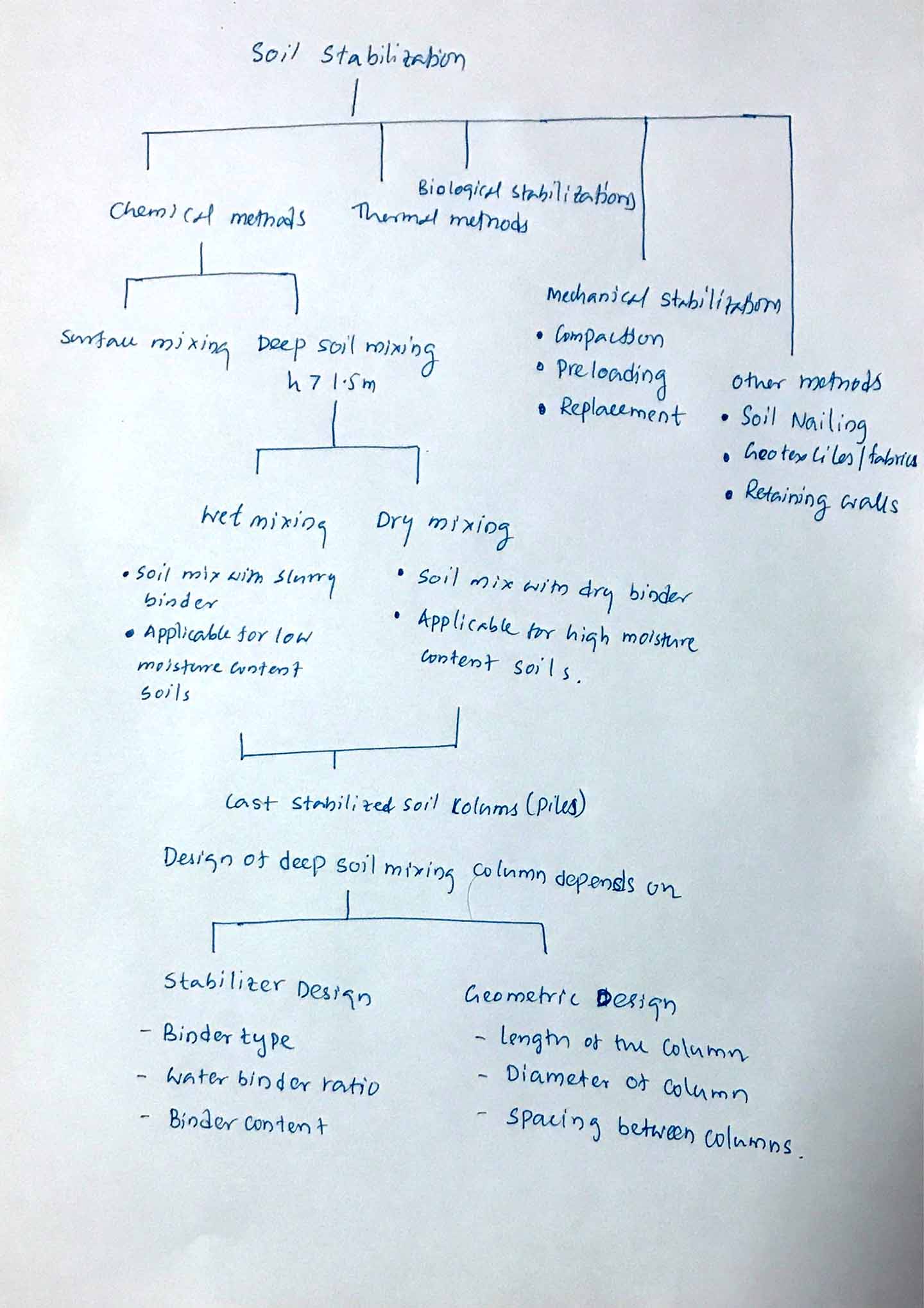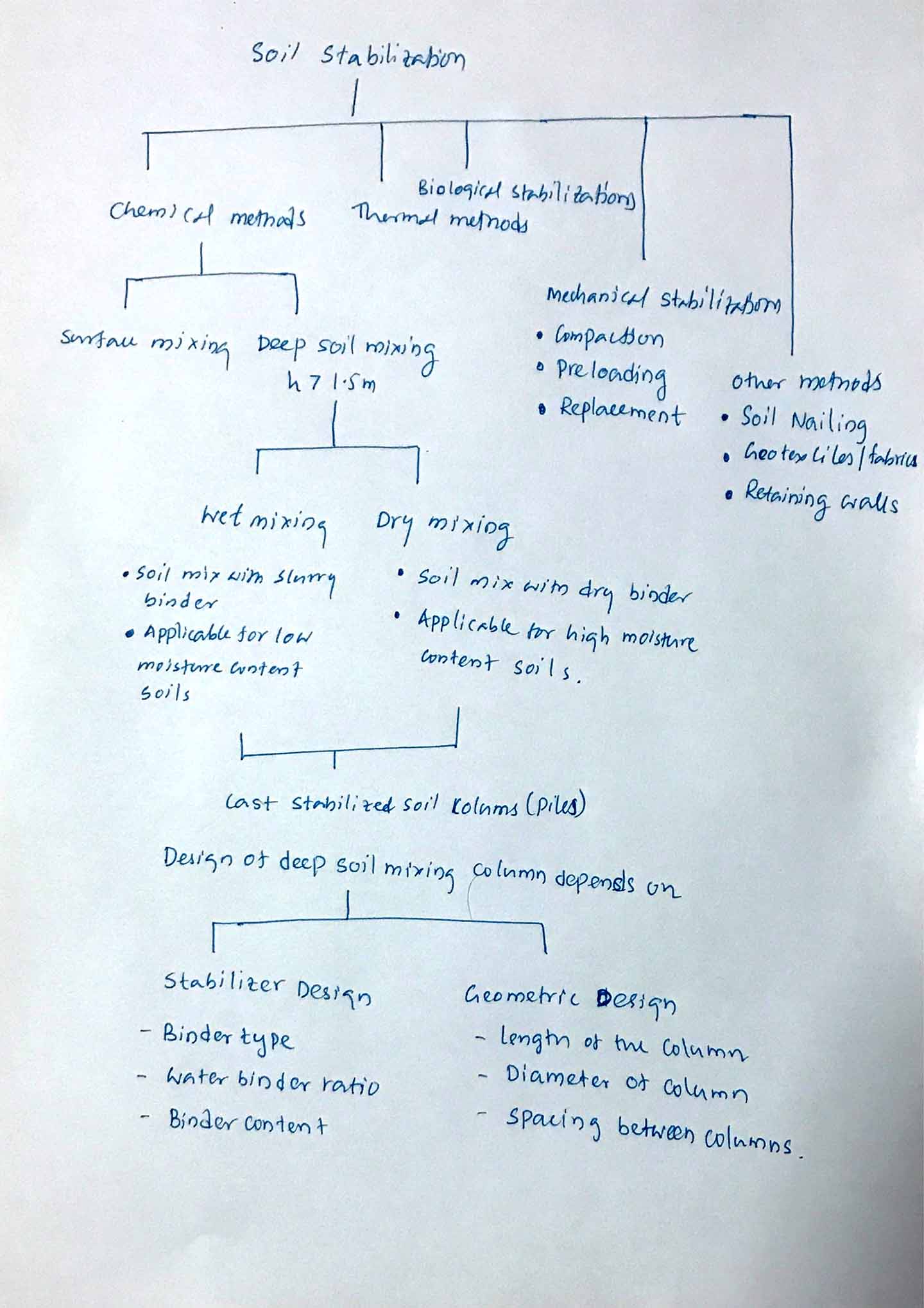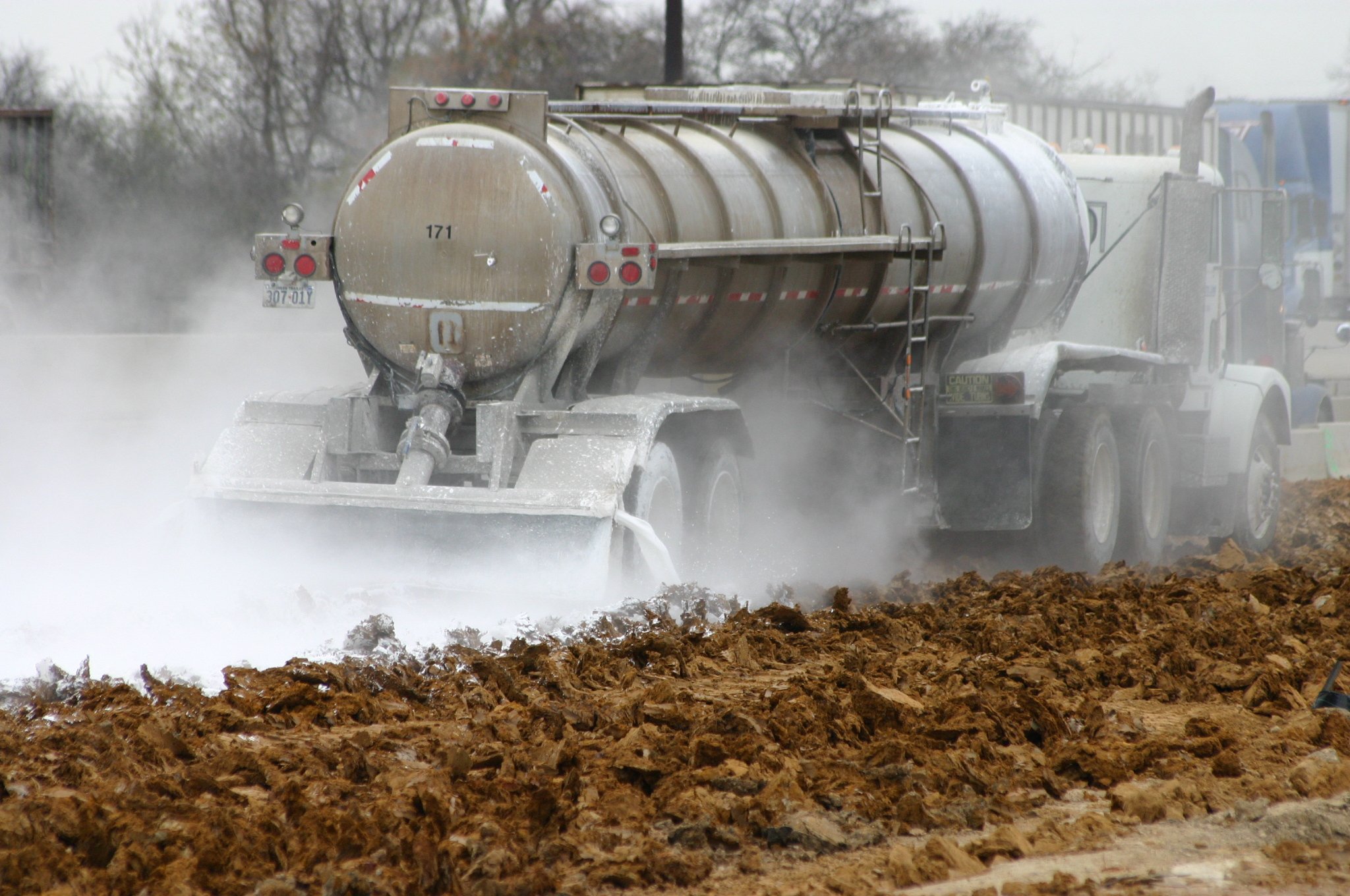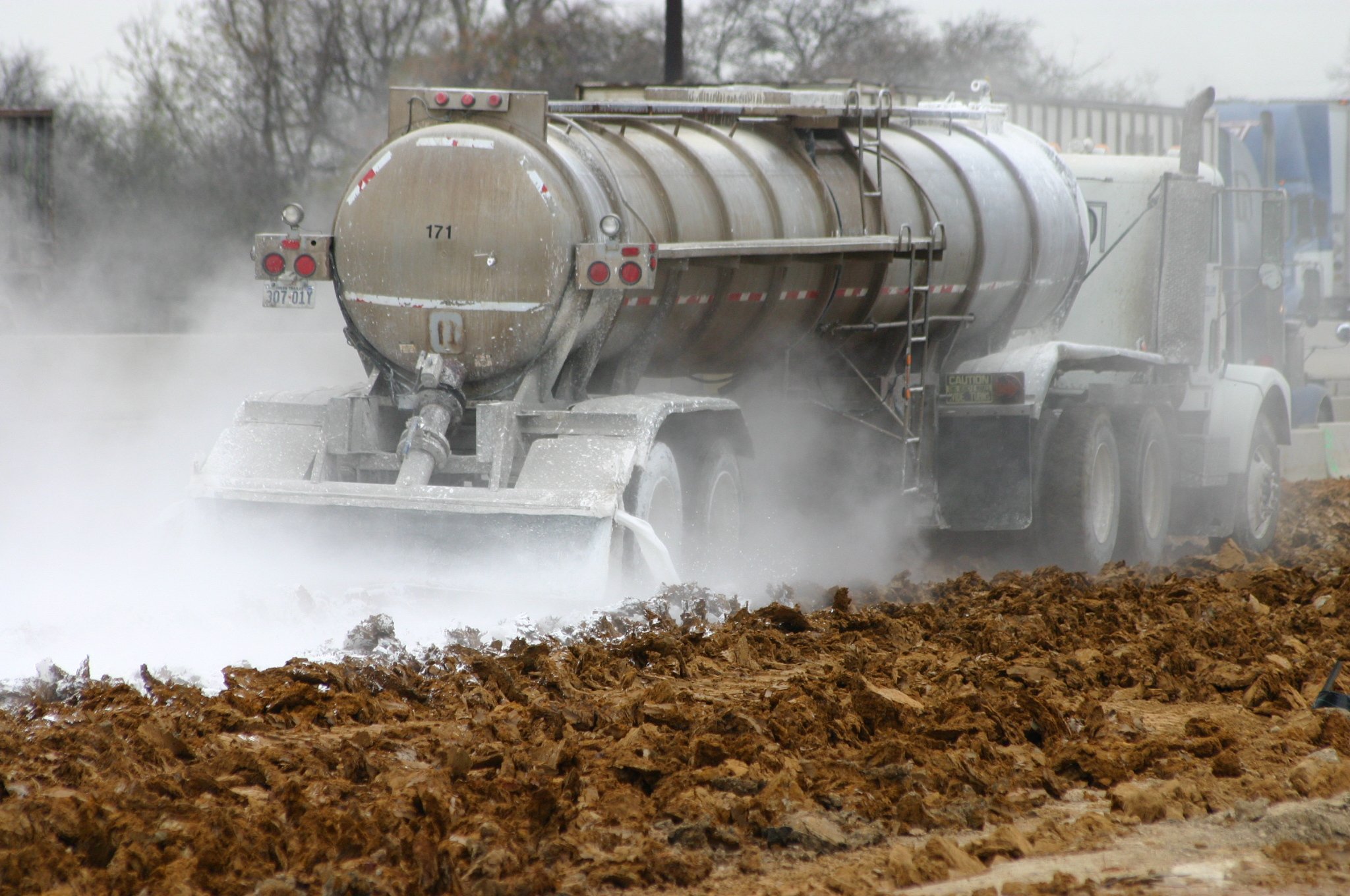Soil stabilization is a technique used to improve soil conditions and achieve greater bearing capacity by altering the soil's technical properties.
This article discusses soil stabilization methods used in the construction industry. It is a process of improving the technical properties of soil through mechanical and chemical methods.
Ground improvements are necessary when a structure must be built on weak soils. Depends on the Types of soil Improvement methods are different.
We will see
What is soil stabilization?
- Soil stabilization is the improvement of the subsoil.
- First, soil condition is assessed visually at shallower depths and by well examination at deeper depths. If there is no information about soil conditions, it is common practice to perform a soil test.
- Based on Well Investigation -/Soil Test Results, appropriate soil stabilization techniques are selected.
What are the benefits of soil stabilization?
- Soil stabilization improves the shear and compressive strength of the soil
- It reduces the compressibility of the soil and can therefore reduce settlement.
- Reduce soil permeability
- In most cases, it is an environmentally friendly process.
Purpose of soil stabilization
- Typically, soil naturally has considerable resistance to shear and compression.
- However, there are types of soil that do not have the necessary resistance to withstand the loads that occur.
- This can occur at a shallower depth or at a deeper level.
- To improve soil conditions, soil stabilization methods are used.
- Soil improvement can be done mechanically or chemically. In addition, there are other soil stabilization methods such as biological stabilization, etc.
Soil stabilization methods
This article explains in detail the two main methods of soil stabilization.
- Mechanical soil stabilization
- Soil chemical stabilization
Both methods were used depending on the nature of the subsoil and after determining the soil profile through a borehole investigation.
Soil chemical stabilization
Chemical soil stabilization techniques are not common compared to mechanical soil stabilization methods. Mechanical methods do not require very high levels of expertise, while chemical soil stabilization techniques require sophisticated technologies and technical knowledge.
Stabilization of soils such as silt, clayey peat, heathland, organic soils, etc. occurs.
Let's look at which materials can most often be used to improve soil.
- cement
- lime
- fly ash
- blast furnace plate
- Pozzolana
- bitumen
- polymer
All these materials are mixed into the soil and the stiffness or strength of the soil is improved. The stabilization process with these materials is explained in the final part of this article.
There are essentially two types of chemical soil stabilization.
- Surface mixing
- Deep mixing
Surface mixing
This is a relatively simple method that can be carried out from shallower depths to deeper layers. The stabilization material is mechanically mixed into the soil.
Soils with high organic content and/or other highly compressible silts, such as peat, can be removed before mixing.
Deep mixing
As the name suggests, the deep mixing method generally involves depths greater than 1.5 m. This method can be used to stabilize the solid at greater depths.
Weak soil types such as clay, peat or organic soils are mixed with stabilizers that are mechanically injected into the soil.
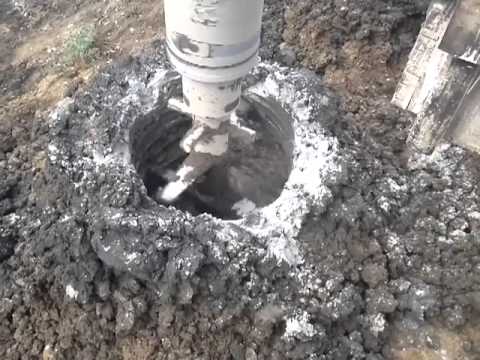
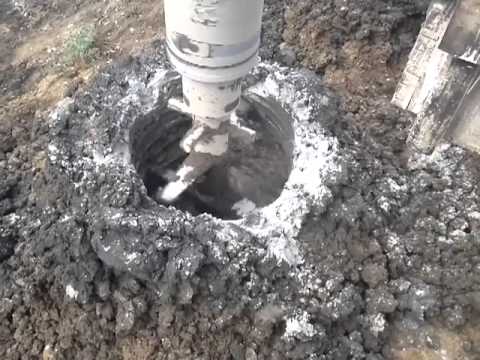
There are two main approaches to the deep mixing method.
- Wet mix
The soil is mixed with mud binders (cement, lime, fly ash, etc.).
This method is particularly suitable for soils with a moisture content of less than 60%. The higher the moisture content, the less effective the mixture.
- Dry mixing
The earth is mixed with the dry binder.
This type of mixture is suitable for soils with a higher moisture content of more than 60%. As the dry binder is introduced and mixed with the soil, it mixes properly when moisture is present.
Deep mixing stabilizes the soil at greater depths. This process involves hardening and strengthening the floor at regular intervals. The soil mass is hardened in the form of stakes at regular intervals. These stabilized piles support the applied loads.
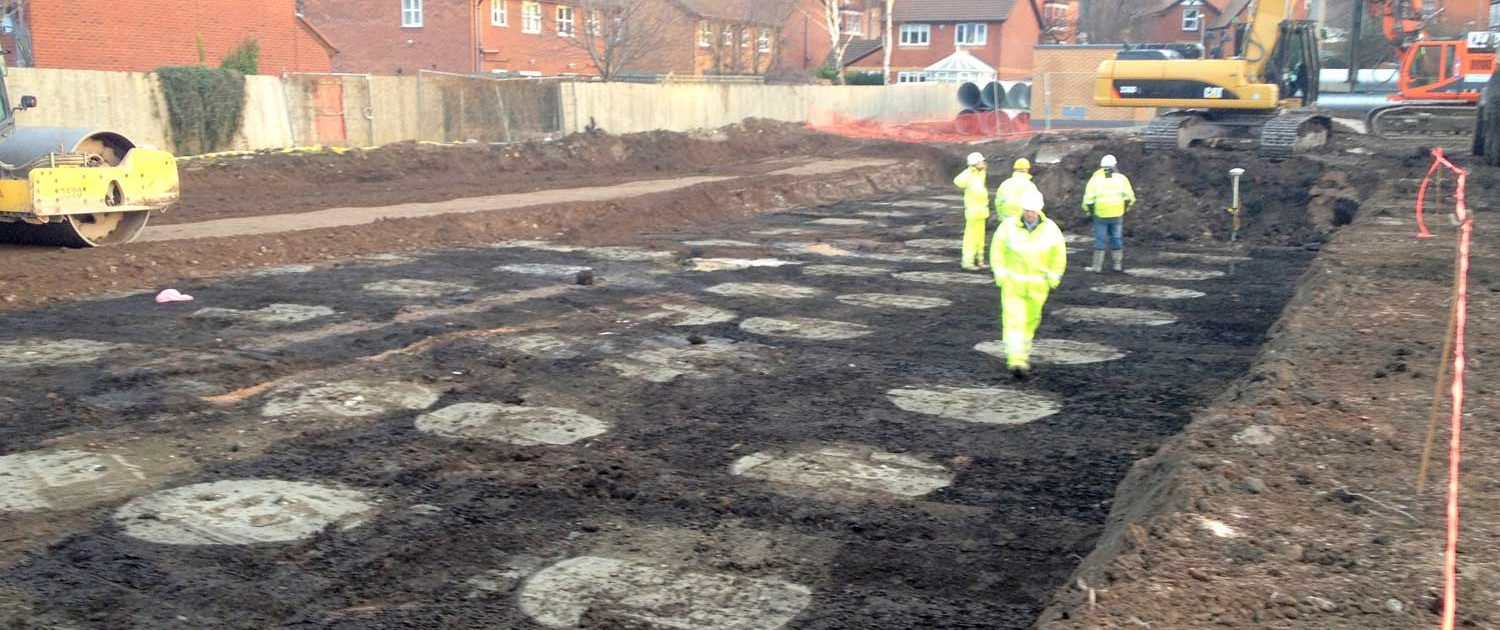
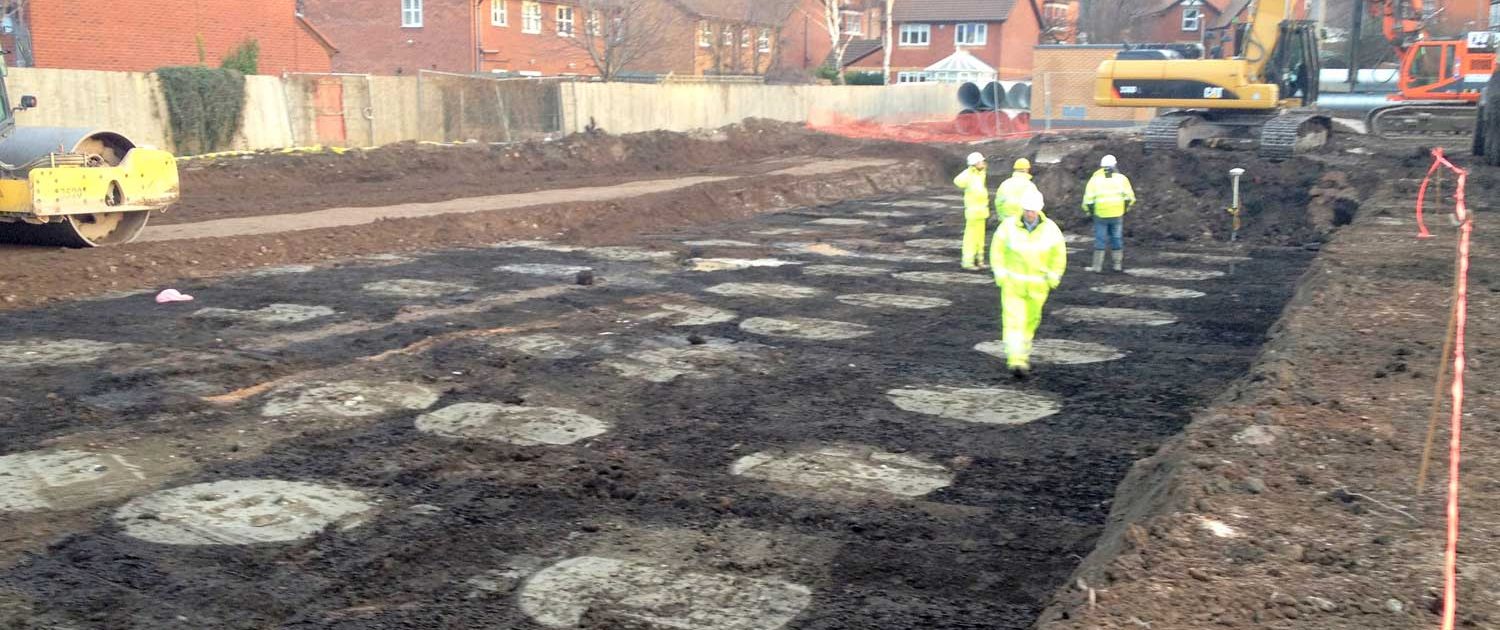
The construction of these stabilized earth columns depends on the following factors.
-
Stabilizer design
- Type of binder used for stabilization and its chemical properties
- Water-binder ratio. It significantly influences the resistance of the stabilized pile.
- Binder contents
-
Geometric draw
- Pillar length or depth to be concreted as stabilized earth pillar
- Column diameter
- Distance between columns
- Column alignment (like blocks, columns signed at regular intervals, columns connected and arranged in rows, regular alignment).
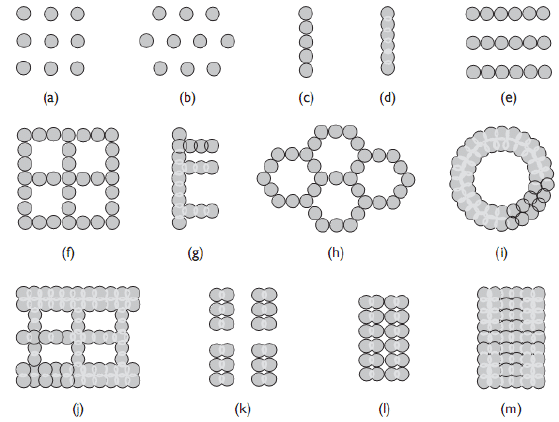

Factors affecting the strength of stabilized soil
The following factors can be considered crucial in developing the strength and stiffness of stabilized earth.
- Organic substance
- Sulfates
- Sulfides
- compression
- Moisture content
- temperature
- My dry effect
Mechanical soil stabilization
Although the name suggests mechanical stabilization, we do not always use mechanical means to stabilize the soil.
By stabilizing, we simply change the quality of the material. Applying pressure to the soil layers creates a more orderly or cohesive mixture. Compressibility increases soil density.
The application of the load depends on the magnitude of the loads exerted on the floor during the use phase.
There are three main methods of mechanical soil stabilization.
- compression
- Preload
- Substitute
- Floor reinforcements
Let's discuss each one in detail.
Soil compaction
This is the commonly used and convenient method in construction.
This method is mainly used for granular soils that do not have sufficient technical strength parameters.
The following methods are used to compact the soil:
- vibration
- Effects
- Crumple
- Pressure
Soil compaction is measured by the increase in density. To achieve better compaction, the soil's moisture content is maintained at an optimal level.
The most commonly used method for measuring soil compaction is
- Proctor dry density
- Sand Cone Test
- Rubber balloon test
- Central Density Test
There are special compaction methods, such as dynamic soil compaction. For more information, see the article Soil Improvements was to be read.
Preload
Prestressing is a method used to apply similar or greater pressure to the soil to achieve settlement prior to the use phase. During the construction phase, the weight of the soil is added to the area to be built until the settlement is stable to some extent.
This method is mainly used for compressible soils such as peat, soils with high organic content and clayey soils that require consolidation processing .
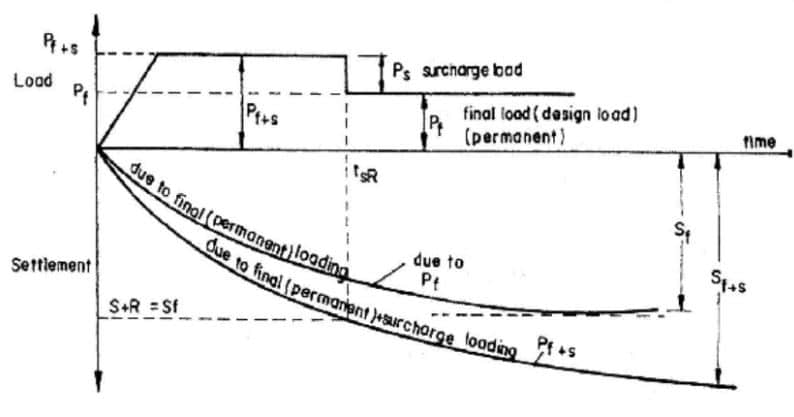
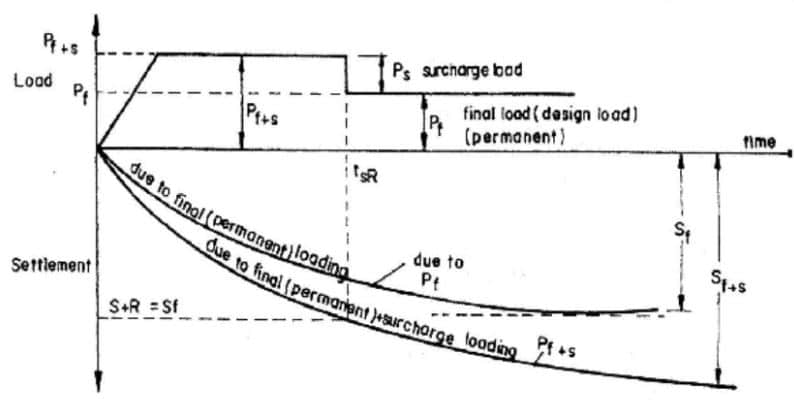
Let's discuss preloading as a soil improvement technique.
- As the loads to be applied during operation are known, possible settlements can be estimated.
- As prestressing is a time-dependent process, the load to be applied must be calculated to obtain the expected settlement.
- We can increase the load to reduce charging time. This can be done by Consolidation Processing Calculation.
- After loading, soil subsidence is monitored. Preloading can continue until ground subsidence reaches its maximum. Furthermore, the monitored values can be compared with the calculated values to reach a conclusion.
Substitute
Compared to other soil stabilization methods, soil replacement is typically used at shallower depths.
Weak soils such as organic soils, medium and soft clay, etc. are replaced by soils with good technical characteristics. The most commonly used substitutes are as follows.
- gravel
- sand
- Quarry dust
- gravel
Other soil stabilization methods
- Geotextiles
- Recycled waste products
- Geomaterials – geogrids, geomats
- Nailing to the ground
- retaining wall
The summary of soil stabilization methods is explained in the following figure.
